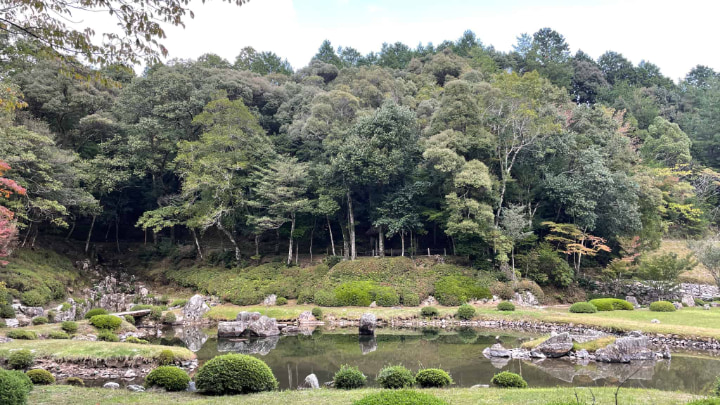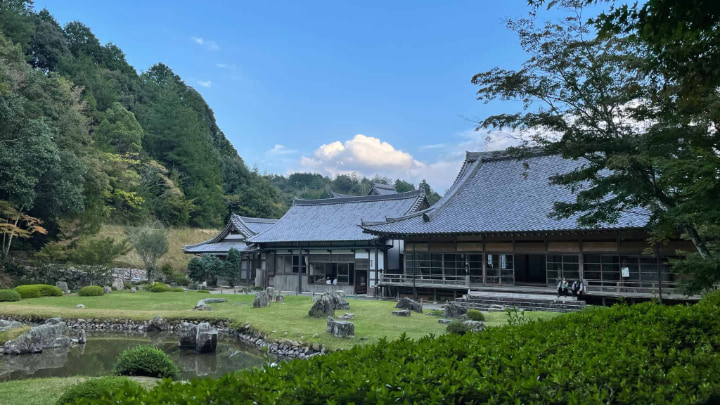Kōzan Jōeiji Temple・Sesshūtei Garden
Author: Richard Perkins
Photos/Videos Taken: 2022/09/17
Address: 2001−1 Miyano-shimo,
Yamaguchi, Yamaguchi,【753-0011】
香山常栄寺 (kōzan-jōeiji) is a Buddhist temple part of the Rinzai sect. Built back in 1563 as Ōuchi Masahiro’s (a military leader who became a feudal lord back in the Muromachi Period) holiday home, this temple's main building was burned down in 1926. It was then rebuilt in 1931. When stepping through the front gate here, you’ll first notice the 無隠 (muin) garden. This is a 枯山水 (karesansui—a type of Japanese garden that doesn’t utilise any water) landscaped by the old munk Imai Nintō. This garden is circular and was made to represent a waterfall.
On the grounds of Kōzan Jōeiji Temple, there is more than just one karesansui garden. Directly in front of the main building is the 南溟庭 (nanmeitei) garden. This garden was landscaped by Mirei Shigemori—a well-known landscape gardener in the Showa Period (1926-1989)—and was designed to represent the sea. The name for this karesansui garden comes from the word 南溟 (nanmei). This refers to a positive world and a world that is full of (good) prospects. The opposite of this is 北溟 (hokumei). This refers to a negative world and a dark/gloomy sea to the north. With lines drawn on the gravel of this garden that is impeccably raked, everyone will want to try and decipher the meaning behind the arrangement of the rocks, along with other facets of the layout, while staring fixated at it.
The karesansui gardens here are all wonderful, but the main attraction of Kōzan Jōeiji Temple is, without a doubt, the 雪舟庭 (sesshūtei) garden towards the back of the main building. Utilising the 池泉回遊 (chisenkaiyū) style of garden, a style of landscape which encompasses a footpath around a pond, it was built by 雪舟 (sesshū), a Buddhist monk who went to China to learn about 水墨画 (suibokuga—a style of painting that uses Indian ink) and established a unique Japanese-style of suibokuga. The grounds of both Kōzan Jōeiji Temple and Sesshūtei together come out to an area of roughly 2975 square meters, and Sesshūtei itself was designated as a “natural historic site” and “natural place of scenic beauty” in 1926 (the same year the main building here burned down). What makes this particular garden special is how the stones are positioned. Positioned from about halfway up the mountain, they’re placed as if running down (like running water). Just like the Muin Garden, the stones here represent a waterfall. Sesshūtei encompasses a forest on three sides (east, west, and north), so this garden, which could have only been made by a suibokuga artist, can be viewed from several angles.
As explained, there are several wonderful gardens at Kōzan Jōeiji Temple. However, Sesshūtei is (undoubtedly) the most famous one here. Being a garden that also represents Yamaguchi Prefecture, the cherry blossoms here in the spring are superb; you can enjoy fresh green leaves in the summer, and the autumn foliage is beautiful. If it were to snow, there’s no doubt that Sesshūtei would look mystical. In the fall, Sesshūtei is lit up at night. You can enjoy a different atmosphere in this garden while gazing at the night sky. This Japanese garden is worth visiting any time of the year.
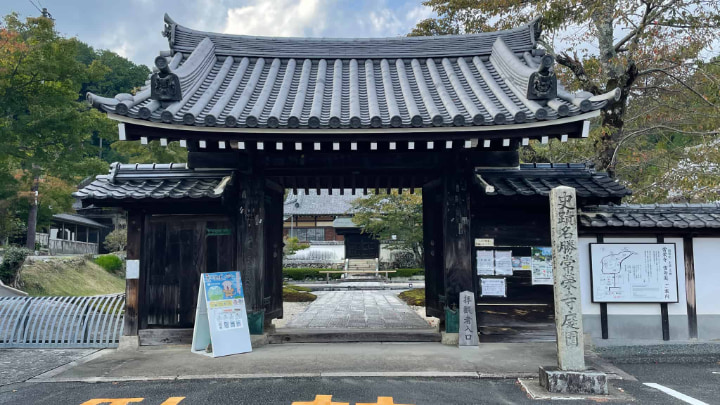

A statue of the suibokuga artist Sesshū.

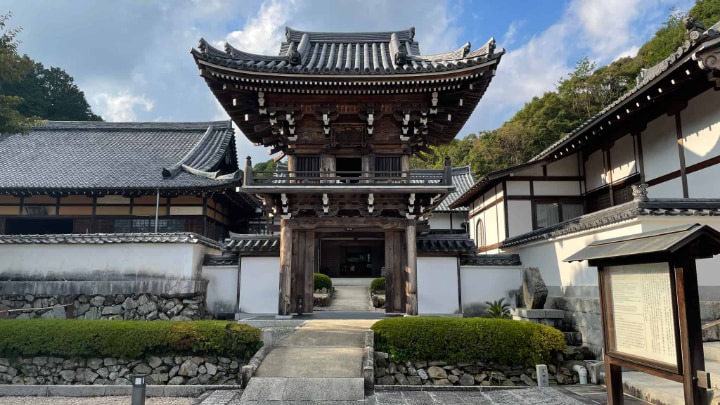
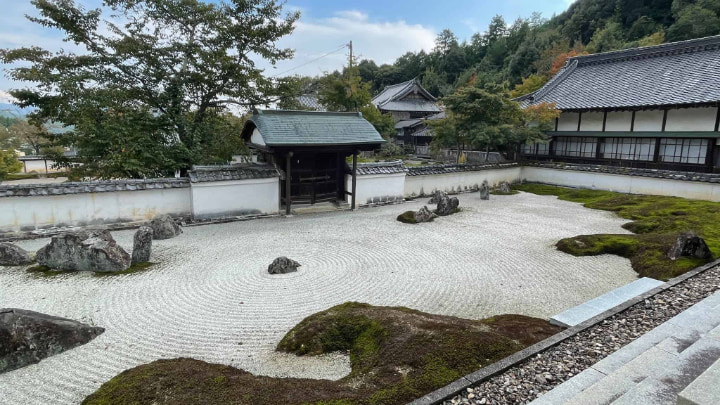
This is the "Nanmeitei" karesansui garden.
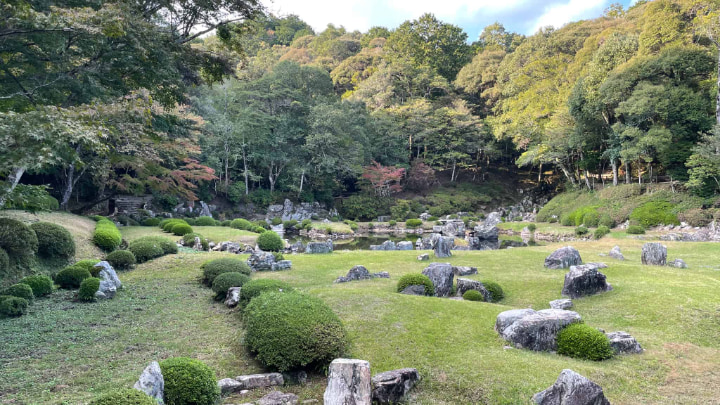
This is the garden that represents Yamaguchi Prefecture: the Sesshūtei Garden.
